La Casa
Heute ist der Name Grifols weltweit bekannt. Es handelt sich um ein globales Unternehmen mit mehr als 23.800 Mitarbeitern auf der ganzen Welt, die sich für das Wohl der Patientinnen und Patienten einsetzen. Doch die Geschichte dieses einzigartigen Unternehmens beginnt ganz bescheiden im Haus einer Familie in Spanien in den ersten Jahren des zwanzigsten Jahrhunderts.
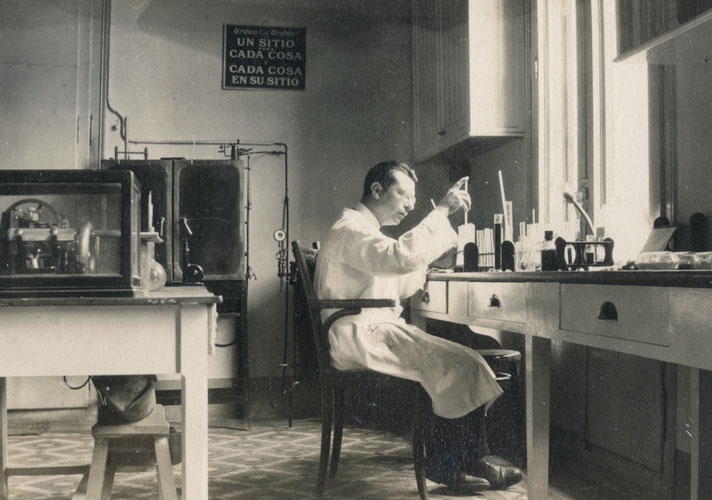
Ein Familienunternehmen
Vor über einem Jahrhundert begeisterte der Arzt und Homöopath Josep Antoni Grifols Morera seinen Sohn im Haus der Familie in Barcelona für die Wissenschaft. Hier baute der junge Josep Antoni Grifols i Roig später mit Hilfe seiner eigenen Söhne sein Labor und schließlich sein Unternehmen auf.
Der Name dieses Labors war „Instituto Central de Análisis Clínicos, Bacteriológicos y Químicos“. Es wurde 1909 von Grifols Roig mit Hilfe einiger Universitätskollegen eröffnet und sollte der Ursprung des Unternehmens Grifols werden.
In den 1920er Jahren übernahm Josep Antoni die Leitung des Labors, das sich damals hauptsächlich mit klinischen Analysen und der Herstellung von Impfstoffen befasste.
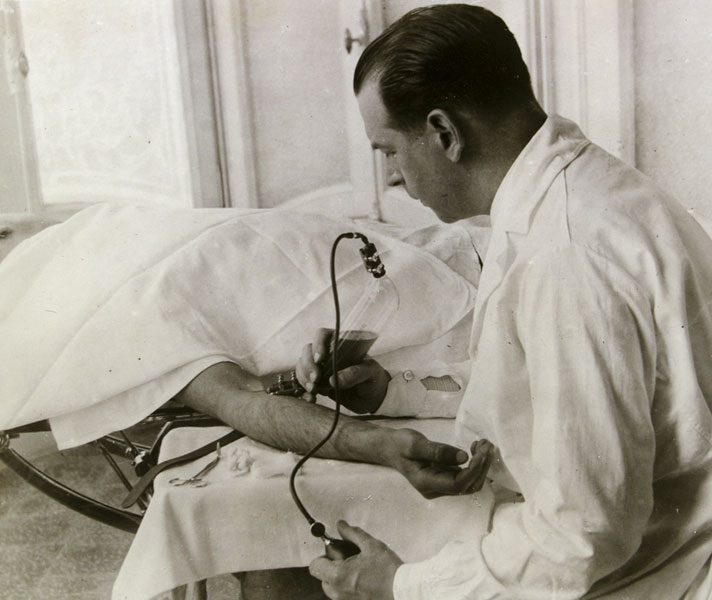
Durchbruch bei der Transfusion
Am 23. Mai 1928 demonstrierte Dr. Grifols i Roig zum ersten Mal in Spanien, dass Blut gespendet, gelagert und dann auf eine Patientin oder einen Patienten übertragen werden kann, ohne dass Spender und Empfänger gleichzeitig anwesend sind.
Das Bluttransfusionsgerät von Grifols wurde der Königlichen Akademie für Medizin in Barcelona vorgestellt. Auf der Grundlage der Arbeit anderer Wissenschaftler hatte Josep Antoni das aseptische System perfektioniert.
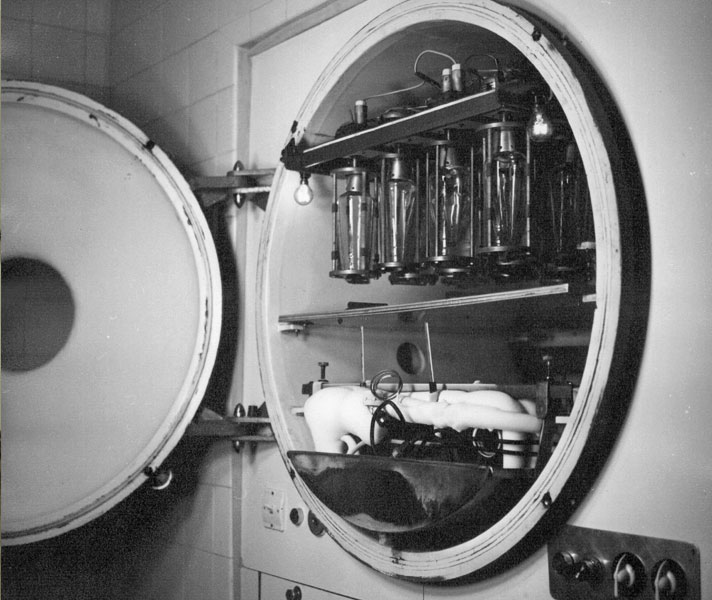
Ein Schritt nach vorn bei der Plasmakonservierung: die Gefriertrocknung
Die Söhne Josep Antoni und Víctor hatten ihr Handwerk bei ihrem Vater im Haus der Familie gelernt, so wie ihr Vater es vor ihnen getan hatte.
Nach dem Ende des spanischen Bürgerkriegs im Jahr 1939 übernahmen sie das Familienunternehmen von ihrem Vater. Sie beschlossen, die Verantwortung aufzuteilen und ihre individuellen Stärken zu nutzen. Josep Antoni übernahm die wissenschaftliche Forschung, während Víctor technischer Direktor wurde.
Ein wichtiger Bestandteil ihrer Geschäftsstrategie war die Gefriertrocknung, ein Verfahren, bei dem Substanzen getrocknet werden können, ohne ihre Eigenschaften zu verlieren. Es könnte effektiv auf die Lagerung von Plasma angewendet werden, was enorme Vorteile für das aufstrebende Unternehmen mit sich bringen würde. Das Unternehmen erhielt 1943 ein Patent für Spanien, und als sich herausstellte, dass es keine geeignete Gefriertrocknungsanlage gab, bauten die Brüder sie selbst.
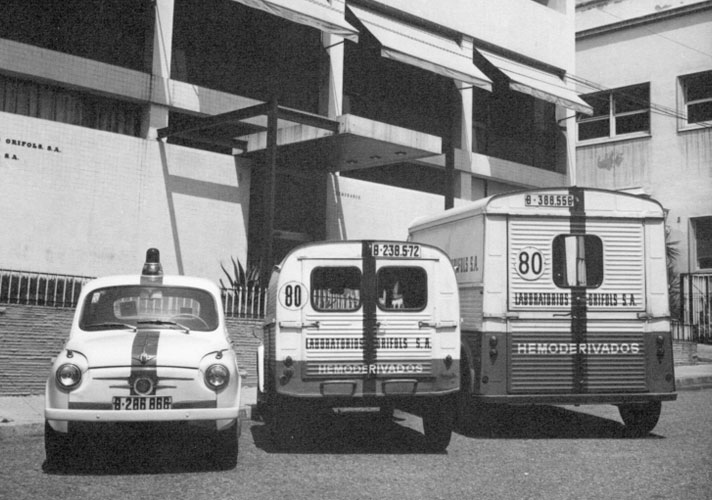
Das Aufkommen der Blutbank
1945 weihte das Unternehmen eine Blutbank ein, die auf die Pionierarbeit von Dr. Duran i Jordà während des Spanischen Bürgerkriegs zurückgeht. Die Einrichtung lieferte Blut an Krankenhäuser und trennte Plasma für Transfusionen ab.
Der Mangel an zuverlässigen intravenösen Lösungen veranlasste Grifols, seine eigenen Lösungen herzustellen. Damals wusste das Unternehmen noch nicht, dass dies sein erster Vorstoß in einen Bereich war, der eines Tages zu einem wichtigen Geschäftsfeld werden sollte.
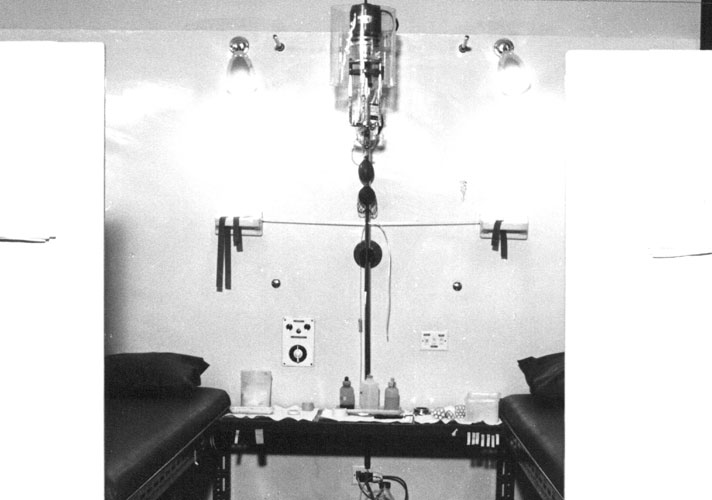
Plasmapherese: der Schlüssel für die Zukunft des Unternehmens
Eine Tragödie traf die Familie Grifols 1958 mit dem Tod von Josep Antoni Grifols i Lucas im Alter von 41 Jahren. Aber er hinterließ ein Vermächtnis, das nicht nur für das Unternehmen, sondern auch für die gesamte medizinische Gemeinschaft revolutionäre Auswirkungen haben sollte: die Plasmapherese.
Sie wird auch heute noch angewandt und ist eine der grundlegenden Techniken der Plasmaderivateindustrie.
Die Plasmapherese ist ein Verfahren, bei dem Patientinnen und Patienten Blutzellen und Blutplättchen injiziert werden, nachdem das Plasma aus der ursprünglichen Blutspende extrahiert worden ist.
Da der Körper nur zwei Tage braucht, um sein Plasma zu regenerieren, im Vergleich zu 90 Tagen bei Vollblut, können Plasmaspenden häufiger erfolgen und größere Mengen der Flüssigkeit liefern, ohne die Gesundheit des Spenders zu gefährden.
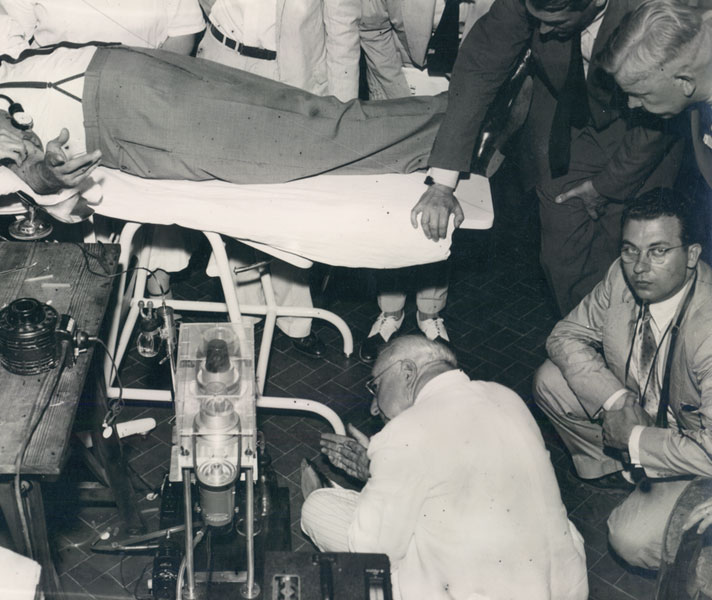
Die Väter der Hämotherapie
Albumin ist eines der Plasmaproteine, die von Edwin Joseph Cohn in den frühen 1940er Jahren entdeckt und isoliert wurden. Dank dieser Arbeit gilt er zusammen mit Josep Antoni Grifols i Lucas als einer der Väter der Plasmamedizinindustrie.
In Spanien industrialisierte Grifols die von Dr. Cohn entwickelte Methode der Plasmafraktionierung mit einer Anlage, die sowohl Albumin als auch Gammaglobulin produziert. Und die Fraktionierung ist bis heute ein wesentlicher Bestandteil unseres Unternehmens.
Diese Techniken und der Zugang zu wesentlich mehr Plasma ermöglichten es dem Unternehmen, seinen Betrieb zu industrialisieren und so das Leben von mehr Menschen weltweit zu verbessern. Kurz gesagt, die Arbeit von Dr. Grifols i Lucas war ein Wendepunkt für die Welt der Hämotherapie und trug dazu bei, dass das Familienunternehmen zu einem weltweit führenden Unternehmen werden konnte.
Menschen, die Menschen helfen
Das Werk
Vom Familienunternehmen zum globalen Unternehmen
Die Welt